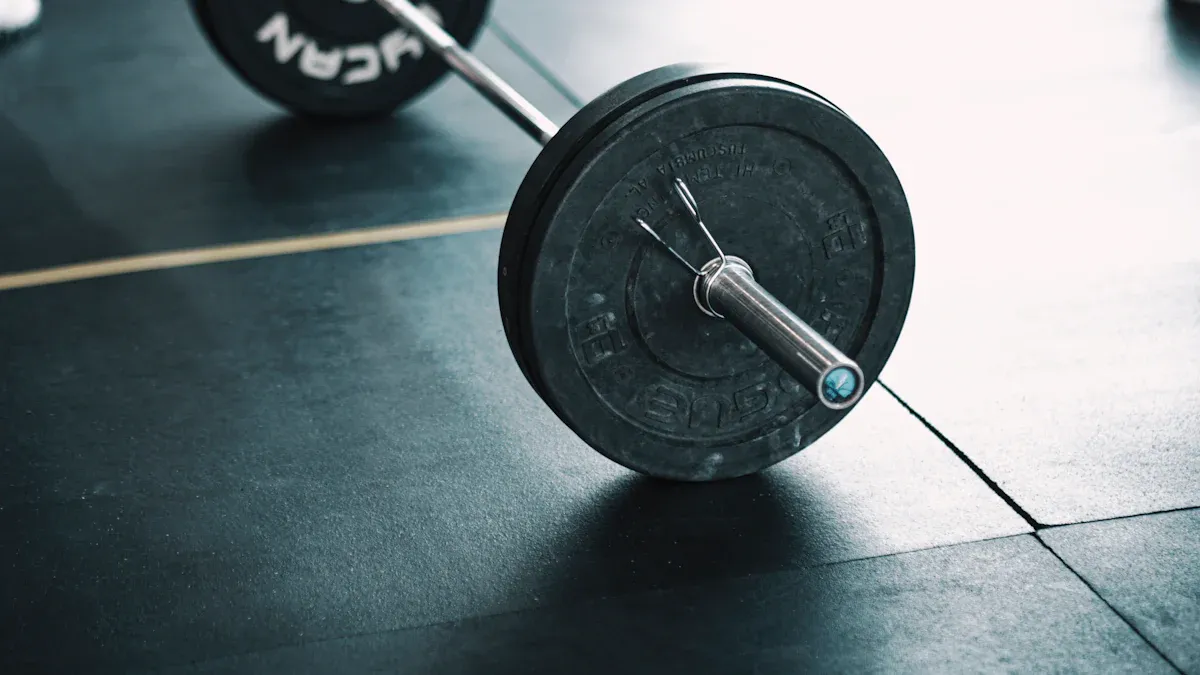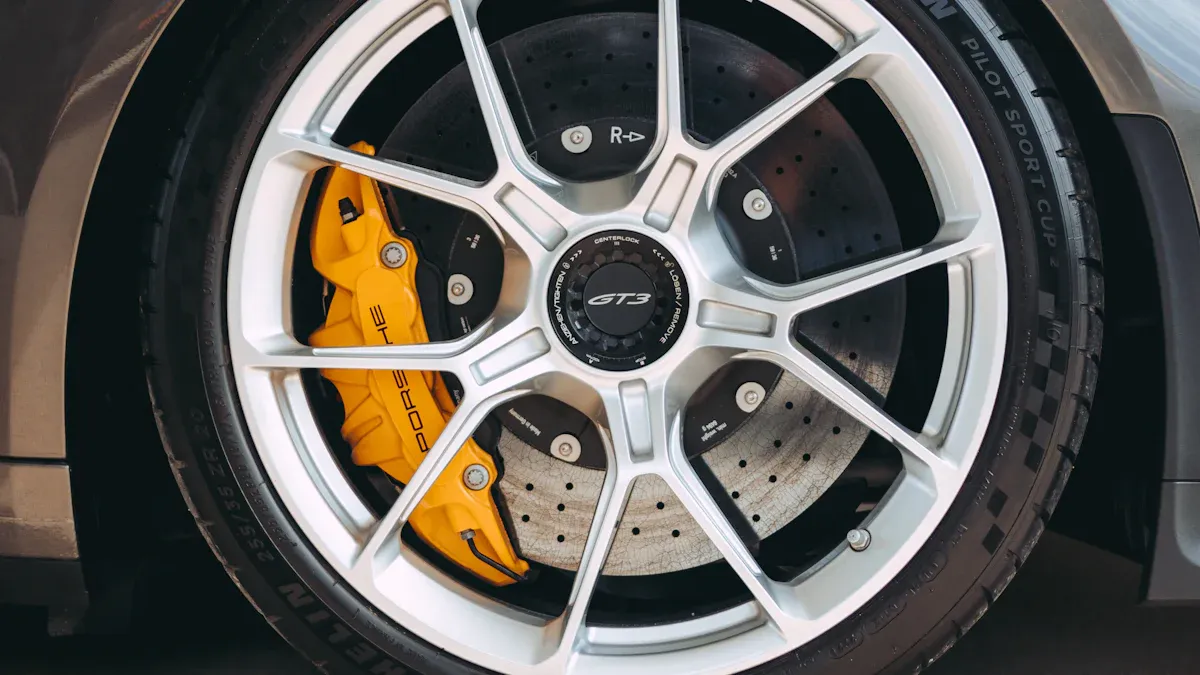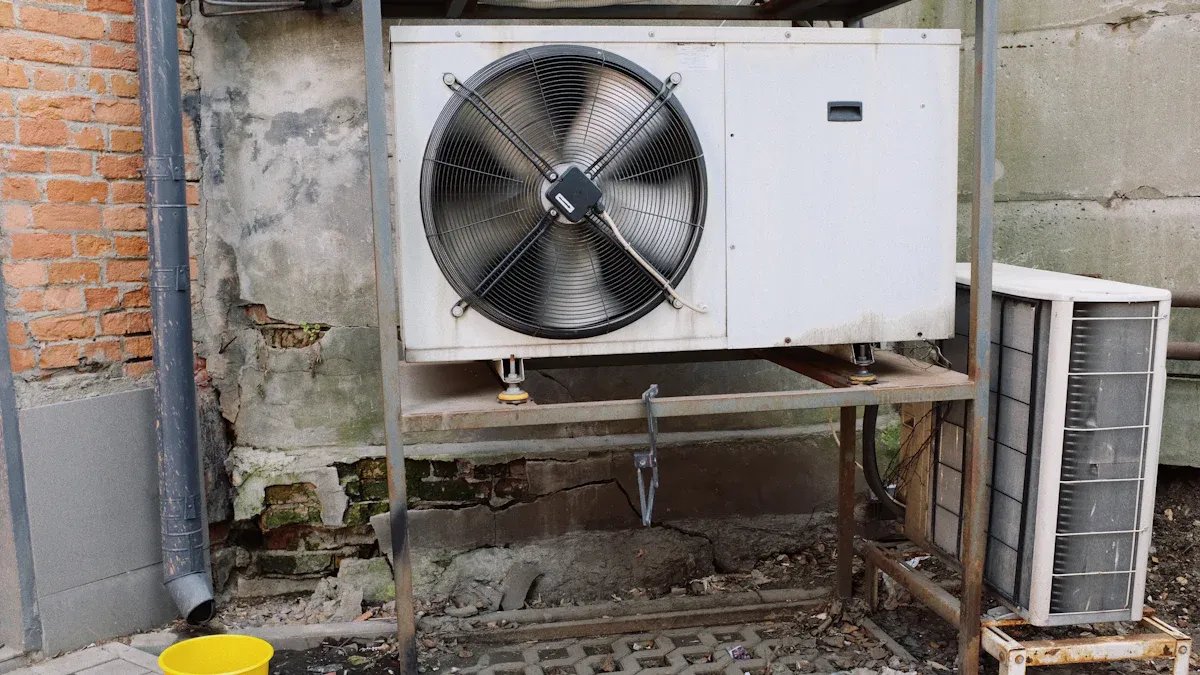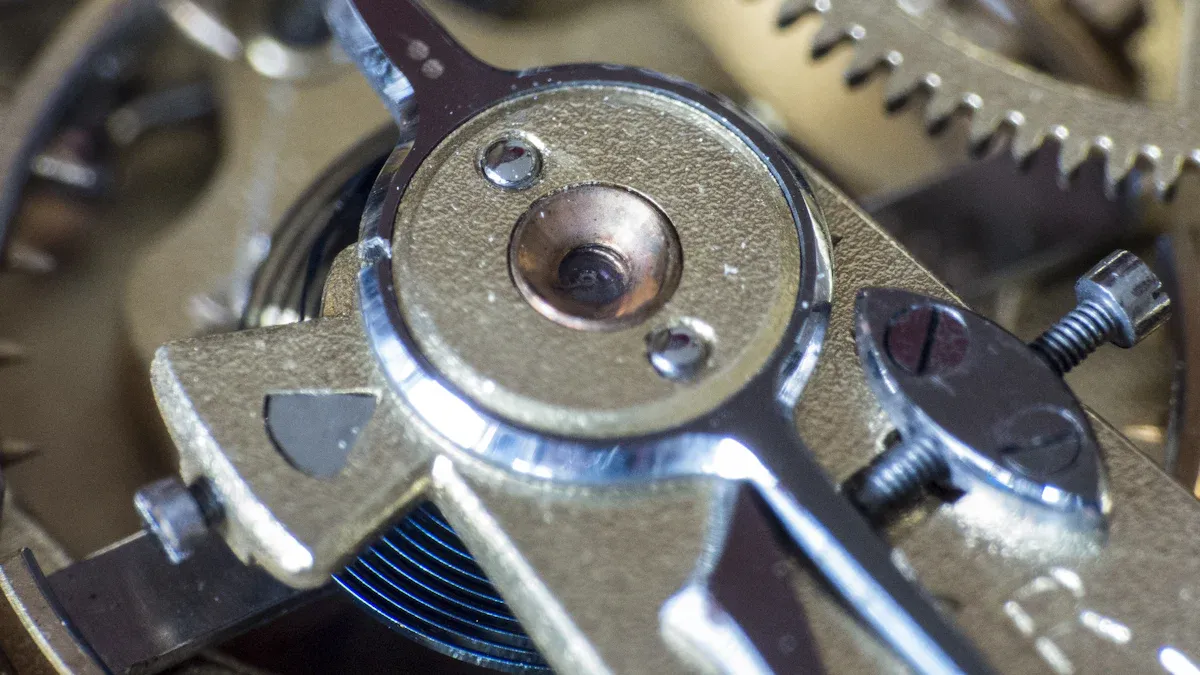

zinc clip-on wheel weights
home > zinc clip-on wheel weights
REG

| sizes | pcs/box | box/case |
|---|---|---|
| 0.25-0.50 oz | 50 | 20 |
| 0.75 oz | 50 | 15 |
| 1.00 oz | 25 | 20 |
| 1.25-2.50 oz | 25 | 10 |
| 2.75-3.00 oz | 25 | 5 |
coated and uncoated
application
Fits: Standard-width rim flange thickness passenger car steel wheels with 13”-17” wheel size.
mc
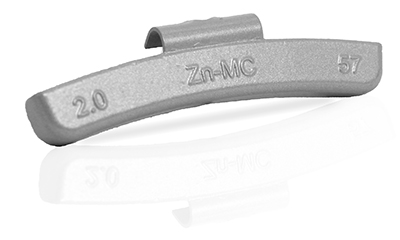
| sizes | pcs/box | box/case |
|---|---|---|
| 0.25-0.50 oz | 50 | 20 |
| 0.75 oz | 50 | 15 |
| 1.00 oz | 25 | 20 |
| 1.25-2.50 oz | 25 | 10 |
| 2.75-3.00 oz | 25 | 5 |
coated and uncoated
application
Application to most North American vehicles equipped with alloy rims
Fits: Many brands like Buick, Chevrolet, Chrysler, Dodge, Ford, Mazda, Oldsmobile, Pontiac & Saturn
aw

| sizes | pcs/box | box/case |
|---|---|---|
| 0.25-0.50 oz | 50 | 20 |
| 0.75 oz | 50 | 15 |
| 1.00 oz | 25 | 20 |
| 1.25-2.50 oz | 25 | 10 |
| 2.75-3.00 oz | 25 | 5 |
coated and uncoated
application
Application to North American vehicles equipped with alloy rims that were manufactured prior to 1995.
Many brands like Acura, Buick, Chevrolet, Chrysler, Dodge, Infiniti, Isuzu, Lexus, Oldsmobile & Pontiac
t

| sizes | pcs/box | box/case |
|---|---|---|
| 0.25-0.50 oz | 50 | 20 |
| 0.75 oz | 50 | 15 |
| 1.00 oz | 25 | 20 |
| 1.25-2.50 oz | 25 | 10 |
| 2.75-3.00 oz | 25 | 5 |
coated and uncoated
application
Application to Most North American light trucks equipped with decorative and larger thickness steel wheels and most light-trucks equipped with alloy wheels.
Steel wheels with a thicker than standard rim flange and light-trucks with non-commercial alloy rims.
fn

| sizes | pcs/box | box/case |
|---|---|---|
| 5-15 g | 50 | 20 |
| 20 g | 50 | 15 |
| 25-30 g | 25 | 20 |
| 35 g | 25 | 15 |
| 40-55 g | 25 | 10 |
| 60 g | 25 | 5 |
coated and uncoated
application
Application to most Japanese vehicles.
Many brands like Acura, Honda, Infiniti, Lexus, Nissan & Toyota.
iaw
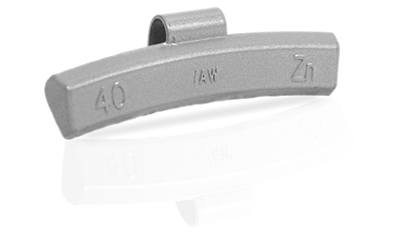
| sizes | pcs/box | box/case |
|---|---|---|
| 5-15 g | 50 | 20 |
| 20 g | 50 | 15 |
| 25-30 g | 25 | 20 |
| 35 g | 25 | 15 |
| 40-55 g | 25 | 10 |
| 60 g | 25 | 5 |
coated and uncoated
application
Application to Many brands like Audi, BMW, Cadillac, Jaguar, Kia, Nissan, Toyota, Volkswagen & Volvo.
en
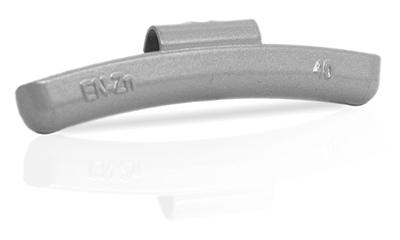
| sizes | pcs/box | box/case |
|---|---|---|
| 5-15 g | 50 | 20 |
| 20 g | 50 | 15 |
| 25-30 g | 25 | 20 |
| 35 g | 25 | 15 |
| 40-55 g | 25 | 10 |
| 60 g | 25 | 5 |
coated and uncoated
application
Application to Audi, Mercedes-Benz, Volkswagen and very early-model Japanese vehicles equipped with alloy wheels.
Many brands like Acura, Audi, Ford, Honda, Mercedes-Benz & Volkswagen.
application of clip-on wheel weights
//
select the correct application

Refer to a wheel weightapplication guide to choose theappropriate knock-on wheelweight for the vehicle you areservicing. Verify that the wheelweight is correctly applied bytesting its placement on the wheelflange. The clip on the weightshould align seamlessly with theprofile of the flange.
//
Confirm The Correct Installation Location

Position the knock-on wheel weight at the correct location of the imbalance. Before striking it with a hammer, ensure that both the top and bottom of the clip are in full contact with the rim flange, while the body of the weight should not be touching the rim. Always use a soft-tip installation hammer to avoid scratching the rim during the installation process.
//
Strike The Weight

Once the wheel weight isproperly aligned, use a soft-tip installation hammer to strike the clip area. Only strike the clip area twice to secure the weight. Striking the body of the weight or hitting the clip more than twice could lead to clip retention failure or weight movement. Tapping the wrong location or tapping too many times can easily lead to installation failure.
//
Check The Weight Installation Effect
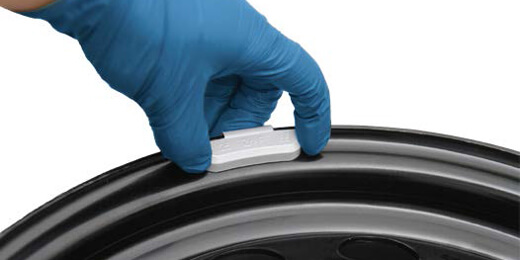
Once the wheel weight is properly aligned, use a soft-tip installation hammer to strike the clip area. Only strike the clip area twice to secure the weight. Striking the body of the weight or hitting the clip more than twice could lead to clip retention failure or weight movement. Tapping the wrong location or tapping too many times can easily lead to installation failure.
related products

EN Type Lead Clip on Wheel Weights
Application to most Japanese vehicles.Many brands like Audi, Mercedes-Benz, Volkswagen.
choosing the right zinc clip-on wheel weights
Zinc clip-on wheel weights are used to balance car wheels. If the wheels are not balanced properly, the tires can wear unevenly, the car can vibrate, and you can use more fuel. Zinc is popular because they are strong, does not rust, and can handle a lot of different tough driving conditions. Fortune’s clip-on weights are designed for easy mounting to rims and are perfect for mechanics and DIY enthusiasts.
What Is Zinc Clip-In Wheel Weights
In recent years, zinc clip-on wheel weights have gained popularity for their environmental benefits and performance characteristics. Zinc is a lightweight metal that has excellent corrosion resistance and is suitable for all weather conditions. While zinc weights are an excellent choice for many applications, they can be slightly more expensive than traditional lead weights. Specific demand scenarios for zinc clip-on wheel weights include:
- Racing: for precise wheel balancing to improve handling, speed, and race performance.
- off-road driving: to help maintain vehicle stability and responsiveness over uneven terrain and changing loads.
- Seasonal Tire Changes: Ensure wheel balance during summer and winter tire changes to maintain optimal performance in different weather conditions. The use of zinc-clamped counterweight blocks in these situations can effectively improve the safety and efficiency of driving.
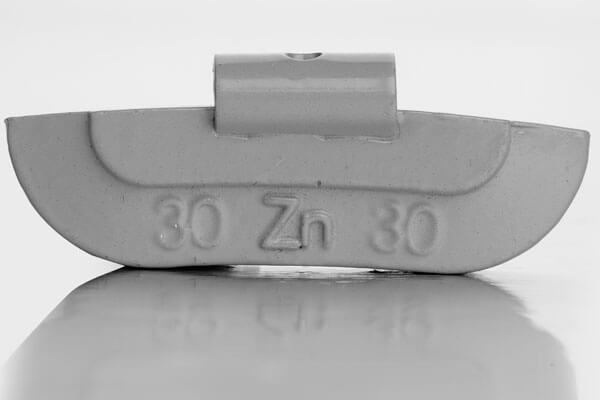
Why is zinc the material of choice for wheel weights?
Environmental factors
One of the advantages of zinc is that it has a minimal impact on the environment. Zinc is non-toxic and poses minimal risk to human health and the environment. Lead is a hazardous substance that can leach into soil and water and cause contamination. As regulations for the use of lead become stricter, more and more manufacturers are switching to zinc as a safer alternative.
Weight and density
Zinc's density is ideal for wheel balancing applications. While zinc is not as dense as lead, it is denser than steel, so it can effectively distribute weight without taking up too much space. This balance of weight and size makes zinc an ideal choice for clip-on weights.
Corrosion resistance
Zinc is naturally corrosion resistant, which is a major advantage in automotive applications. Wheels are often exposed to harsh environments, including moisture, road salt, and other corrosive elements. Zinc's corrosion resistance ensures that the weights maintain their integrity over time, providing consistent performance without the risk of rust or performance degradation.
How to install a Zinc clip-on Wheel Weight: A step-by-step guide
It is crucial to gather all the necessary tools before you start the installation. Below is a list of the tools you will need:
1. Zinc clip-on wheel weight blocks: Make sure you choose the right size and weight for your wheels.
2. Wheel weight pliers: These specialized pliers help to hold the weights securely on the rim.
3. Tire Balancer: A tire balancer is essential for checking the balance of your wheel after installation.
4. Cleaning cloth: used to clean the surface of the wheel before installing the weights.
5. Rim cleaner: a suitable cleaner to remove any dirt or debris from the wheel.
6. Safety gloves: to protect hands during installation.
Step-by-step guide to installing zinc-clamped wheel weight blocks
Preparing the Wheel
It is very important to prepare the wheels before beginning the installation. Begin by removing the wheels from the car. Lift the car with a jack and remove the wheel with a wrench. After removing the wheel, thoroughly clean the rim with rim cleaner and a cleaning cloth. This will ensure that the weights are properly adhered and that no dirt or debris can affect the balance.
Determine the focus
Once the wheel is cleaned, it’s time to determine the location of the weights. If you have a tire balancer, spin the wheel on the balancer to find the point of emphasis. The balancer will show you where you need to add weight. If you don’t have a balancer, you can visually inspect the wheel while spinning it. The point of emphasis is usually the lowest point when the wheel is spinning.
Selecting the right weight
Once you have determined the point of emphasis, select the appropriate zinc clip-on wheel weight block. Zinc weights come in a variety of sizes, so it’s important to choose a weight that matches the weight needed for balancing. If you are unsure, check the manufacturer’s specifications or refer to the weight chart.
Installing the Counterweight Block
Using a wheel weight clamp, carefully secure the zinc clip-on weights to the center of gravity of the rim. Position the weights so that the clamp is securely fastened to the rim. Make sure the weights are flush with the rim to prevent movement while driving. Repeat this process if more than one weight is required.
Reinstalling the Wheel
Once the weights are securely installed, it is time to reinstall the wheels on the vehicle. Align the wheel with the hub and then hand-tighten the wheel nuts. Once all the nuts are in place, place the vehicle back on the ground and use a torque wrench to tighten the nuts to the manufacturer’s specifications.
Balancing the Wheel
After reinstalling the wheels, it’s vital to check the balance. If you have a tire balancer, put the wheel back on the balancer and rotate it to make sure the weights are effectively balancing the wheel. If the wheel is still unbalanced, you may need to add or adjust the counterweight accordingly.
Best practices for maintaining zinc clip-on wheel weights
Regular Inspections: One of the best ways to maintain your zinc clip-on wheel weights is to inspect them regularly. During a routine tire change or wheel alignment, take the time to check the condition of the counterweight. Look for signs of corrosion, damage, or looseness.
Correct mounting: The correct mounting of the wheel weights is essential to prolong their service life. Ensure that the steel clip-on wheel weights are securely fastened to avoid dislodgement and imbalance due to improper installation, thus preventing uneven tire wear and affecting vehicle handling. Follow the manufacturer’s installation guidelines to ensure optimum performance.
Avoid harsh chemicals: When cleaning your wheels, avoid caustic chemicals and use mild soap and water instead to maintain the integrity and longevity of the wheel weights
Monitor Tire Pressure: Proper tire pressure is critical to both safety and wheel weight block life. Inadequate tire pressure can lead to excessive wear of the blocks, which can lead to failure. Check tire pressure regularly and adjust as needed to ensure optimum performance.
Balance and Alignment: Imbalance can cause vibration, uneven tire wear, and increased pressure on the balance weights. Please perform regular maintenance checks to ensure that wheels are properly balanced and aligned.
Frequently asked questions about clip-on wheel weight blocks

When to Replace Clip-On Wheel Weights
A simple inspection can usually determine if a weight needs to be replaced. If a weight has fallen off, is loose, or is showing signs of wear, it needs to be replaced. Also, if your wheel shows signs of imbalance (vibration, uneven tire wear), check that the weights fit properly and are in good condition.
Can zinc clip-on weights be reused?
Zinc clip-on weights are known for their durability and can be reused with careful disassembly and maintenance, making them especially suitable for tire replacement or maintenance applications. They should be inspected for wear, corrosion or damage before reuse, and if bent, chipped or deteriorated, they should be replaced with new weights to ensure performance. Proper storage and handling will extend their life and make them an economical choice.
What is the weight limit for zinc clip-on wheel weights?
Zinc clip-on wheel weights are designed to accurately balance all types of wheels. The weight limits depend on the product and manufacturer, but typically range from 0.25 to 2 ounces or more. These weights are commonly used in combination to balance passenger car wheels, but vehicle and manufacturer recommendations should be consulted to determine applicable weight limits. Please note that exceeding the weight limit can result in uneven tyre wear and reduced handling.
